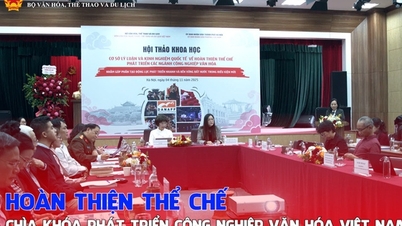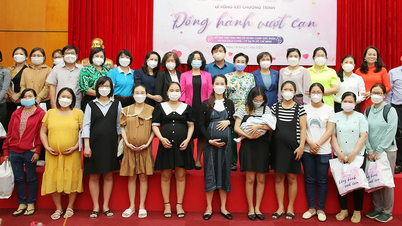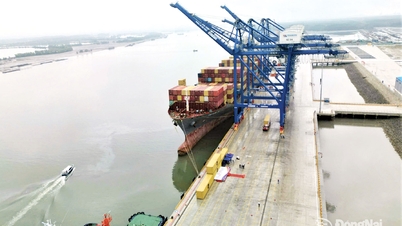On September 4, 2025, the Prime Minister issued Decision No. 1894/QD-TTg approving the Vietnam Environmental Industry Development Program for the 2025-2030 period (Program). This is an important milestone, affirming the Government's determination to build the environmental industry into a green economic sector, capable of self-reliance, modernity, and practical contributions to environmental protection, responding to climate change, and implementing the commitment to net zero emissions by 2050.
The program aims to establish a synchronous system of policies, institutions and legal framework for the environmental industry by 2030, moving towards building a separate decree to regulate this field. In addition, improving domestic production capacity to meet most of the demand for technology and equipment for wastewater, exhaust gas, solid waste and hazardous waste treatment. At the same time, developing environmental monitoring and measurement equipment, proactively meeting part of domestic demand, while promoting research and application of waste-to-energy technology, this is an important solution for the circular economy and reducing greenhouse gas emissions.
In addition, the Program also aims to form a modern industrial ecosystem capable of producing and supplying equipment, technology, and environmental industrial products for domestic and export markets. Develop an ecosystem of enterprises - research institutes - universities - state management agencies - international organizations to promote research, mastery and commercialization of environmental technology, increase the capacity to localize equipment, and create green value chains in the country.

The program aims to make environmental industry a driving force for green transformation.
To realize the set goals, the Program identifies 6 key groups of solutions. These are key directions to create a breakthrough for the environmental industry, from institutional improvement, science and technology development to resource mobilization and promoting domestic and international cooperation. Specifically:
Firstly, perfecting the system of policies and institutions to develop the environmental industry. The task focuses on building a synchronous legal framework, from mechanisms, policies to standards and technical regulations in accordance with international practices. In addition, it is necessary to adjust tax policies, mechanisms to encourage technology transfer and supplement statistical indicators for the industry, in order to create a transparent management and development foundation. The issuance of identification codes for environmental goods, along with policies to support investment in forming recycling industrial zones and clusters, will expand the development space for businesses. At the same time, reviewing and updating the list of technologies, equipment and environmental products will help guide investment and production and ensure consistency in implementation.
Second, developing the market for environmental industrial goods. The program focuses on building and expanding market demand through ordering and bidding mechanisms for domestic products, equipment and technology, while enhancing the supply capacity of enterprises. Supporting small and medium enterprises, combined with building a network of incubators in industrial parks, clusters and key training facilities, will create a foundation for innovation, market formation and development in the early stages of the value chain.
In parallel, priority activities on product labeling, trade promotion and investment attraction are promoted, contributing to the formation of an environmental goods market associated with quality standards and sustainable development. In addition, orientation is given to building key enterprises, national environmental industry centers and encouraging public-private partnerships in research, production and product commercialization.
Third, developing science and technology, innovation and digital transformation to serve the development of environmental industry. The program focuses on promoting research, application and dissemination of advanced technologies in waste treatment, pollution reduction, recycling, reuse and energy production from waste. At the same time, it supports businesses in receiving, mastering and transferring new technologies, including through buying and selling patents, hiring experts or cooperating in training.
Fourth, training, coaching and developing human resources for the environmental industry. The program aims to build a database on human resource needs, deploy training and coaching programs linked to practice and management and production needs. In addition to training state management staff and technical staff of enterprises, it is necessary to focus on building specialized, long-term training programs to form a high-quality workforce to serve the sustainable development of the industry.
Fifth, build and operate electronic information infrastructure on environmental industry. This is an important task to meet the needs of storing, managing and exploiting information. The database of enterprises and environmental industrial goods will be updated regularly, synchronized with related fields. In parallel, electronic information pages are invested, maintained and upgraded to ensure stable and modern operation, serving the management work, connecting enterprises and supporting communication on the environmental industry.
Sixth, promote communication, dissemination and raise social awareness. The program will organize mass media campaigns, competitions and events to spread information about products, technologies and models of environmental industrial development. At the same time, international cooperation in propaganda and dissemination of experiences will also be enhanced to create social consensus. Communication activities are not only aimed at the community but also encourage businesses to promote, enhance brand value and actively participate in the Vietnam National Brand Program.
The application of design technology, automated production, modern control systems and digital solutions is also promoted to improve productivity, quality and management efficiency. In particular, digital transformation will become an important driving force, helping businesses apply sustainable production models, circular economy, and optimize the value chain from research, production to consumption of environmental industrial products.
Source: https://mst.gov.vn/cong-nghiep-moi-truong-viet-nam-buoc-di-chien-luoc-trong-hanh-trinh-xanh-hoa-nen-kinh-te-197251101221024789.htm




![[Photo] The road connecting Dong Nai with Ho Chi Minh City is still unfinished after 5 years of construction.](https://vphoto.vietnam.vn/thumb/1200x675/vietnam/resource/IMAGE/2025/11/04/1762241675985_ndo_br_dji-20251104104418-0635-d-resize-1295-jpg.webp)
![[Photo] Ho Chi Minh City Youth Take Action for a Cleaner Environment](https://vphoto.vietnam.vn/thumb/1200x675/vietnam/resource/IMAGE/2025/11/04/1762233574890_550816358-1108586934787014-6430522970717297480-n-1-jpg.webp)
![[Photo] Panorama of the Patriotic Emulation Congress of Nhan Dan Newspaper for the period 2025-2030](https://vphoto.vietnam.vn/thumb/1200x675/vietnam/resource/IMAGE/2025/11/04/1762252775462_ndo_br_dhthiduayeuncbaond-6125-jpg.webp)
![[Photo] Ca Mau "struggling" to cope with the highest tide of the year, forecast to exceed alert level 3](https://vphoto.vietnam.vn/thumb/1200x675/vietnam/resource/IMAGE/2025/11/04/1762235371445_ndo_br_trieu-cuong-2-6486-jpg.webp)
























































































Comment (0)